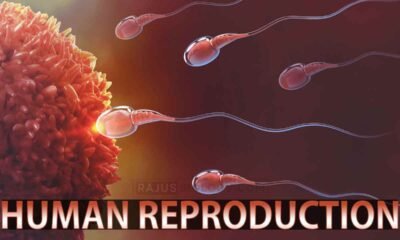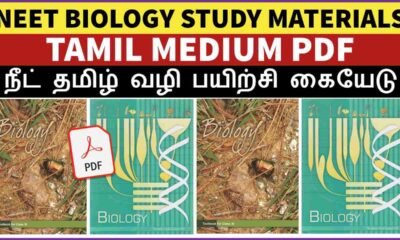Blog
Recombinant DNA Technology Short Notes

In this article we will discuss about the steps in Recombinant DNA Technology.
Recombinant DNA technology or gene cloning is a new born discipline of science which aims to alter the heredity apparatus of a living cell. It is also popularly known as genetic engineering which is performed under highly controllable laboratory conditions so that the cell can pet form completely new functions. A recombinant DNA molecule is produced in joining together two or more DNA segments usually originating from different organisms.
This is achieved by using specific enzymes for cutting the DNA (by the help of restriction enzymes) into suitable fragments and then joining together the appropriate fragments (by, ligase enzyme). It is now possible to isolate a desired piece of DNA (out of millions of nucleotide pairs in a chromosome) and join this isolated piece with another DNA molecule to create a new DNA molecule in test tube (in vitro).
This molecule is now introduced back into living organisms (such as bacteria) to produce large number of copies (gene cloning). These developments called ‘recombinant DNA technique’ or ‘gene splicing’ or ‘genetic engineering’ have made possible to produce chromosomes with gene combination that is never formed naturally.
Recombinant DNA technology involves several steps in specific sequence such as:
- Isolation of genetic material
- Cutting of DNA at specific locations
- Recombinant DNA formation
- Cloning of DNA
1. Isolation of Genetic Material (DNA)
In majority of organisms deoxynobonucleic acid or DNA is the genetic material. It is present in chromosomes within the cell. To isolate DNA, the cell at first is to be broken open by treating cell with enzyme (lysozyme for bacteria, cellulose for plant cell. Chitinase for fungus) so that DNA with other macromolecules are released. To get pure DNA the other necessary macro molecules such as RNA, protein, polysaccharides are removed by treating with appropriate enzymes. This is often called foreign DNA. It is then incorporated into bacterial plasmid.
2. Cutting of DNA
To cut DNA at specific location restriction endonuclease enzyme is used. These enzymes are called as molecular scissor or molecular scalpel and found in bacteria. These enzymes can cut the, DNA at any known point. The enzymes can cut DNA of the plasmid as well as foreign DNA at specific sites. These sites or points are mostly 8 palindromic i.e., the sequences which read the same both backward and forward e.g., ‘Madam’.
3. Formation of Recombinant DNA
As stated earlier a desired piece of DNA or a gene is first isolated. This is generally called as foreign DNA. It is then incorporated into bacterial plasmid (plasmids are rings of DNA other than main ring shaped DNA of a bacterium which can replicate independent of main DNA). For this DNA of the plasmid is cut open by endonuclease enzyme leaving the sticky ends. The foreign DNA is also cut out (by the same restriction endonuclease) and allowed to join the sticky ends of plasmid DNA. Such a plasmid DNA is now known as recombinant DNA.
4. Cloning of DNA
The recombinant plasmid DNA obtained above is allowed to multiply to form a clone of recombinant DNA. To achieve this recombinant plasmid DNA is introduced into a rapidly dividing bacterium. Each time the bacterium divides and replicates its DNA, it also copies the introduced recombinant plasmid and also the foreign DNA. This method of introducing plasmid DNA into a bacterium (usually E. coli.) is known as transformation. In this process bacterial cell takes up pieces of naked DNA from the surrounding medium.
These bacteria with recombinant plasmid DNA are grown in nutrient medium where these double in number in every 20-30 minutes, producing millions of cells. In this way millions of copies of recombinant plasmid DNA are formed.
To recover the foreign DNA from recombinant plasmid DNA, the bacterial cells are broken. The foreign DNA is cut out of the recombinant plasmid DNA by appropriate restriction enzyme and separated by gel electro-phoresis.
Important Steps in Recombinant DNA technology:
1. Isolation of DNA from the selected organism and preparation of DNA fragments (foreign DNA) to be cloned.
2. Insertion of the DNA fragments (foreign DNA) into a suitable vector (such as plasmid DNA) to produce recombinant DNA.
3. Introduction of the recombinant DNA into a suitable organism (such as bacteria) called host. This process is called transformation. Generally E. coli is used for cloning.
4. Multiplication of host cells and so also multiplication of recombinant DNA and cloning of desired gene.

 Entertainment1 month ago
Entertainment1 month agoIbomma Bappam: Redefines Telugu Streaming Trend

 Blog1 month ago
Blog1 month ago[PPT] The living world Class 11 Notes

 Blog1 month ago
Blog1 month ago[PPT] Human Reproduction Class 12 Notes
- Blog1 month ago
Class 12 Biology Notes Chapter wise PPT

 Blog1 month ago
Blog1 month agoIosmirror.cc Apk: Enables Smart Screen Sharing
- Blog1 month ago
PG TRB Botany Study Material PDF Free Download
- Blog1 month ago
Class 11 Biology Notes Chapter wise PPT

 Blog1 month ago
Blog1 month agoDownload NEET Biology Study Materials in Tamil












